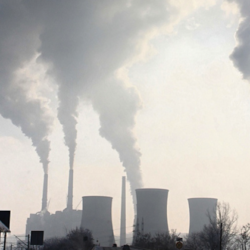A student-led divestment campaign to push universities to rid their endowments of fossil fuel stocks has spread to more than 250 college campuses. Government pension funds, religious communities and other investors are joining the fossil fuel divestment movement.
The campaign is changing the politics of climate change as surely as the student movement to force universities to divest from companies doing business in South Africa changed the politics of apartheid in the 1980s.
The movement may help protect investors from a $20 trillion carbon bubble that is destined to burst. Our “ecological overshoot” combined with our “financial overshoot” presents investors with a “$20 trillion big choice,” as John Fullerton, Founder and President of the Capital Institute, states.
The “carbon bubble” entered the spotlight as a result of a March 2012 report, “Unburnable Carbon,” by the Carbon Tracker Initiative. The report concluded that the world had already used so much of its 50-year “carbon budget” that only 20% of the proven reserves owned by the top 200 fossil fuel companies and governments could be burned without increasing average global temperatures by more than 2° Celsius, triggering catastrophic climate change.
With 80% of their proven reserves unburnable, fossil fuel companies have an enormous stranded assets problem not reflected in their share prices. Those prices are also artificially inflated by government subsidies and the companies’ success in keeping the cost of carbon pollution off their balance sheets by foisting it on the public at large.
The International Energy Agency shares the view that fossil fuel companies have a huge stranded assets problem. In its World Energy Outlook for 2012, it stated that 2/3 of their proven reserves must stay in the ground if the world is to achieve the 2° C (3.6° F) goal, unless carbon capture and storage technology is widely deployed (which it said “remains highly uncertain”). That technology is not the solution.
Bill McKibben popularized the science and math of the carbon bubble in his Rolling Stone article, “Global Warming’s Terrifying New Math.” His GoFossilFree campaign is propelling the divestment movement.
A number of market analysts recognize that the financial markets are not properly valuing high-carbon assets. Bob Litterman, formerly head of risk management for Goldman Sachs in New York, compares the carbon bubble to the subprime crisis, saying, “When there’s a recognition that the atmosphere cannot absorb an unlimited amount of carbon, there’s risk that people will very quickly revalue assets producing those emissions.”
This month Bloomberg focused attention on the carbon bubble by featuring “The Most Influential Climate Study Few People Know About” on its website for days.
Global banking giant HSBC recently warned that major oil and gas companies like BP, Shell, and Statoil could lose up to 60% of their market value if the international community sticks to its agreed emission reduction targets.
With so much money at stake for the fossil fuel industry, vast sums of money continue to flow into climate denial campaigns to undermine climate science and block progress on climate policy. More and more of the money is dark money, anonymous and untraceable.
A new University of Oxford program on asset stranding will “identify high-carbon sectors and assets that could be dramatically devalued or written off.” The program, backed by HSBC, will help investors identify and manage the risk of asset stranding from climate change, declining resources, disruptive new green technologies, and regulatory changes.
Mindy Lubber, President of Ceres and director of the $11 trillion Network on Climate Risk, rightly pointed out in her Forbes article, “Fossil Fuel Divestment is a Timely Issue for Investors,” that institutional investors are in a unique predicament in evaluating fossil fuel stocks because of their duty not to make investment decisions that favor one generation of beneficiaries over another. “If investing in carbon-intensive stocks is good for current retirees but undermines the broader economic future for those just entering the workforce, are they meeting that standard? Conversely, if they divest and returns suffer, are they favoring younger beneficiaries over older ones?”

